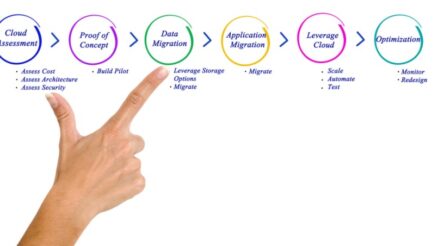Coaxial cables are critical in seamlessly transmitting high-frequency electrical signals across diverse applications. However, the type and quality of coaxial cable chosen can significantly impact the efficiency and reliability of your communication network. Whether it’s for broadband internet networking cables, high-speed computer data busses, cable television signals, or connecting radio transmitters and receivers to their antennas, transitioning from traditional hand-formable cables to modern RG coaxial cables with superior flexibility marks a crucial advancement in ensuring optimal performance and adaptability.
Table of Contents
1. Improved Electrical Performance and Velocity Propagation
Modern advanced flex coaxial cables offer superior functionality over traditional hand-formable cables by delivering excellent electrical and mechanical performance. Advanced flex coaxial cables’ enhanced power handling and shielding capabilities revolutionize their application in various domains. For example, in high-speed computer data busses, these advanced flex coaxial cables offer crucial advantages such as;
- Facilitates higher data transmission speeds
- Maintains signal integrity
- Reduces electromagnetic interference
That way, these superior flexible coaxial cables help elevate the efficiency and reliability of data communication within computer systems while guaranteeing uninterrupted operation in mission-critical environments. The improved electrical performance of these cables lays the foundation for optimized performance and scalability in computer data buses, empowering businesses and organizations with faster, more reliable data processing capabilities.
2. High Resilience Against Micro-Fractures
Advanced flexible coaxial cables boast innovative and unique lamination and robust double shield construction using quality FEP jackets and PTFE dielectric insulators, which are crucial in enhancing their resilience against micro-fractures. Micro-fractures can significantly impact the performance and reliability of these cables by disrupting the transmission of electrical signals, leading to signal loss, degradation, or even complete failure of communication applications.
For example, microfractures, more common with traditional hand-formable cables, can result in intermittent connectivity, dropped calls, and poor data transmission quality. That can lead to service interruptions, customer dissatisfaction, and potential financial losses for telecommunication providers. Therefore, transitioning to flexible coax cables ensures resilience against micro-fractures, crucial to maintaining the uninterrupted operation of telecommunication networks and delivering consistent, high-quality services to customers.
3. Wide Applications and Versatile Connectivity
Reliable and experienced manufacturers of flexible coaxial cables prioritize superior flexibility and performance while ensuring wide applications and versatile connectivity. These cables support various connector types and styles, such as the minimal SMA, threaded TNC, N connector for microwave-frequency signals, and highly engineered SMP connectors. That allows users to seamlessly transition from traditional options to flex coaxial cabling, harnessing the transformative potential of this innovative technology in enhancing connectivity and performance across diverse applications.
However, sourcing your flexible coax from a reliable manufacturer will ensure more versatility and compatibility with up to 60 GHz frequencies. For instance, the IW-RF250 coax is a flexible cable ideal for high-power applications and seamlessly integrates with a broad selection of connectors to effectively meet diverse project requirements. Their versatility makes these flexible coaxial cables indispensable across various industries, from telecommunications to aerospace, ensuring reliable and efficient connectivity.
4. Effective Shielding Against Noise
Precisely engineered flexible coaxial cables boast effective shielding mechanisms to minimize electromagnetic interference (EMI) and external noise, ensuring clean and reliable signal transmission. Such cables feature multi-layered constructions with robust shielding materials like copper and aluminum foil, providing superior conductivity and shielding effectiveness.
Advanced shielding configurations, such as tin-plated copper braid shields, further enhance protection against EMI across various frequencies. Flexible coax will enable high-quality signal transmission in telecommunications, broadcasting, and data networking applications by reducing noise and interference, making them indispensable components for reliable and interference-free communication.
In conclusion, transitioning to flexible coaxial cables is essential in the modern digital era, where speed and reliability are paramount. Considering that the contemporary consumer of digital services has a low tolerance for delays, transitioning from traditional semi-rigid or hand-conformable coaxial cables to advanced flex coaxial cables is crucial. However, selecting a reputable brand offering precise engineering and affordability will ensure seamless signal transmission, underscoring the importance of investing in quality infrastructure for efficient communication networks.



